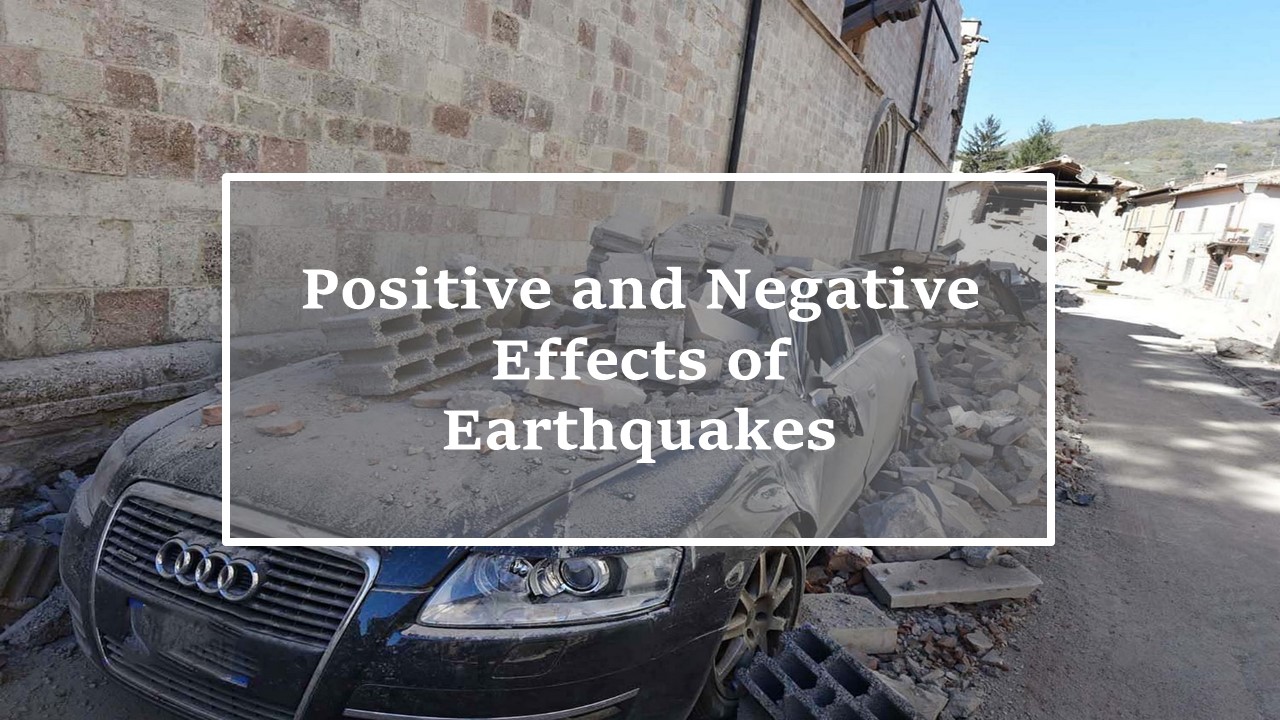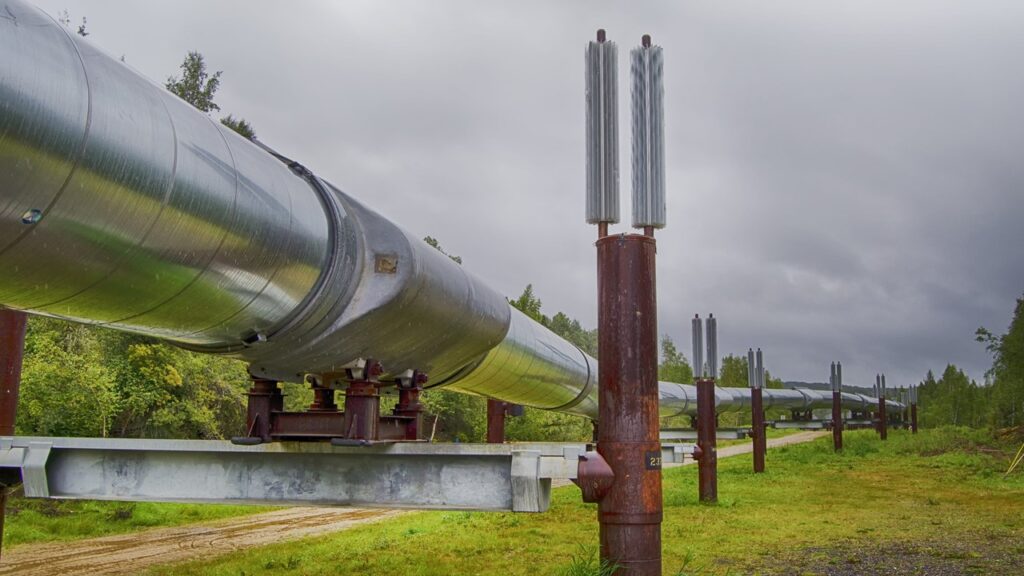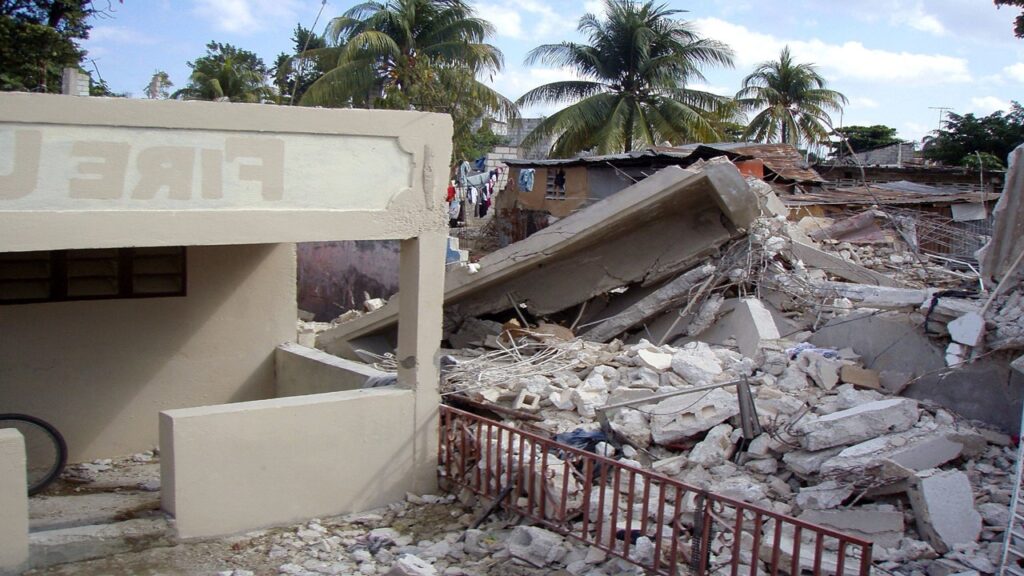Effects of Earthquakes: Positive, Negative, Examples

Effects of earthquakes: not only disruptive but beneficial also.
Earthquakes have occurred for very long periods of time, changing landscapes and affecting nations. In the past, people regarded earthquakes as a bad omen because of its destructive power. It was in fact in the late 19th century that the science behind them unveiled. The relationship between the physical processes of Earth, the geology of particular regions and seismic activities became clear. Today, earthquakes represent the symptoms of active tectonic movement.
Effects of earthquakes
Without a doubt, earthquakes cause considerable damage around the world. They destroy human-built infrastructure, cause deaths and injuries. Yet, earthquakes have actually shaped the world as we see it today. They also allow us to exploit certain raw materials from the ground by shuffling rock layers. So, earthquakes have both positive and negative effects.
Positive effects of earthquakes
Like many other natural hazards, earthquakes provide many natural service functions. Thus the positive effects of earthquakes include: influencing the flow of underground water, oil and natural gas, make mineral resources available, landform development, monitoring the inside of Earth and producing seismic hazard assessments for designing earthquake-resistant structures.
Earthquakes influence the flow of underground water, oil and natural gas
Earthquakes form natural springs
One important effect of earthquakes is that they produce faults. These faults in turn influence the underground flow of water, oil and natural gas. What happens is that rocks are displaced when there is an earthquake. This displacement creates new or re-structure underground fluid conduits. As such, fault movement can either cause fluid to percolate further into the ground or resurface back as springs. As an illustration, Barton Springs in Austin, Texas, arise from fault zones.
Oases and natural energy sources can also spring up
Conversely, faulting can create underground dams that redirect or delay the flow of fluids. They develop where impervious rock layers move alongside fluid channels during an earthquake. As a result, water, oil and natural gas may accumulate underground in the form of reservoirs. They can also spring up as oases or natural energy sources. In arid regions of Southern Carolina, USA, such subsurface dams have created many oases.
Make mineral resources available
Another beneficial effect of earthquakes is related to underground mineral extraction. As it is, mineral deposits commonly form underground. They result when molten rocks (magma) cool or when minerals in subsurface water crystallize. As faulting occurs, mineral deposits may clump together or become exposed. These mineral-rich cracks, called veins, are important sources of precious metals such as gold, silver and platinum. Consequently, earthquakes make these mineral resources available for economical extraction.
Earthquakes impact on landform development
Earthquakes create hills, coastal terraces and mountain ranges
The natural landform as we see it today is a result of earthquakes that have occurred over millennia. During earthquakes, land is uplifted, broken and faulting occurs. These processes shape the natural environment creating hills, coastal terraces and mountain ranges. In Capo Vaticano, western Calabria, Italy, for instance, the beautiful coastal terraces are a marker of earthquake activities.
Faults can become valleys
Similarly, faults themselves can become part of the natural landforms. Rock materials along these faults may erode faster than the surrounding earth materials. Therefore, valleys may form over time if rivers and streams cut through them. The Rio Grande Rift Valley, that extends from Colorado, USA to Chihuahua, Mexico, is such an example.
Earthquakes help to monitor the inside of Earth
In terms of research and understanding, earthquakes are useful to us. By studying seismic waves and faults, we can envision what’s happening underground. For instance, tremors near volcanoes indicate that they are about to erupt. Similarly, we can map out the internal structure of Earth by measuring the time it takes for seismic waves to travel through it. What’s more, scientists also study zones on active faults that have not experienced earthquakes in a long time. These places called seismic gaps have the greatest potential of causing large earthquakes in the future. Hence, better prediction can be made and communities can be better prepared.
Seismic hazard assessments for designing earthquake resistant structures
A seismic hazard assessment is a measure of the likelihood of ground shaking across a region. It is a key component of earthquake risk assessment and for designing earthquake-resistant structures. These studies provide the background for constructing buildings, bridges and infrastructure that can withstand earthquakes. For example, planning of the Trans-Alaskan pipeline was based on a valuable seismic hazard assessment. Since the pipeline crosses the Denali Fault, Alaska, geologists studied the fault before designing it to resist anticipated earthquakes. As expected, eventual tremors in the region caused very little damage to the pipe and no oil was spilled due to advanced engineering designs.

Image from pxfuel
Negative effects of earthquakes
Primary and secondary effects
When it comes to the negative effects of earthquakes, they are categorized into primary and secondary effects.
Primary effects of earthquakes
Basically, earthquake episodes trigger some immediate effects such as ground shaking, surface rupture, damage to human structures and deaths. Called primary effects, these events are directly related to fault movement.
Secondary effects of earthquakes
Eventually, some other effects may occur due to sustained vibrations and faulting. Such activities, called secondary effects, can be related to other hazards like tsunamis and landslides. Or they can lead to changes in land elevation, fire and even diseases.

Photo by Lt. Cmdr. Gary Brunette, USCDCP on Pixnio
Factors that influence the destructive potential of an earthquake
In general, earthquakes can have catastrophic economic impacts and devastate entire communities. Nevertheless, the destructive potential of an earthquake depends on many factors. These include the intensity and magnitude of the event as well as the focus depth and epicentre location. Additionally, the topography and local conditions in a region are also relevant. Yet, the amount of damage and fatalities largely depend on the population density in a particular area and the types of construction in place.
For example, in 2002 a magnitude 7.9 earthquake hit Alaska on the Denali Fault. This led to thousands of landslides, a ground rupture of 340 km in length and liquefaction. However, there was little structural damage and no deaths because the region was mostly inhabited. Conversely, a 7.0 magnitude earthquake struck Haiti in 2010, killing some 250,000 people. This disaster devastated Haiti which is already subject to economic, social and political instability.
Ground shaking and rupture
The immediate effect of earthquakes is ground shaking. When such vibrations become violent, they can displace Earth’s surface or even rupture it. Major surface rupture may occur near faults that initiated the earthquake. As a result, a low cliff called a fault scarp, which may extend for a long distance along the fault, may form. For instance, scenic fault scarps are visible in the Teton Range, Wyoming, USA, due to geological activity of the Teton Fault.
Earthquakes damage built infrastructure
At the same time, intense shaking can seriously damage the built infrastructure. As seismic waves travel through the ground, they impact on transportation systems, water and waste systems and communication systems. Earthquake tremors can cause bridges to buckle, rails to bend and pavements and highways to crack. Gas and electric power networks may also rupture leading to fires and explosions due to gas leaks.
Additionally, severe tremors can break dams and levees and flood settlements along the way. The 1971 San Fernando earthquake, California, caused part of the levee on the Van Norman Dam to slid into the reservoir. More than 80,000 people were at risk of flooding. Fortunately, the reservoir was only half full of water and people evacuated just on time. In the same manner, earthquake events damage phone lines and systems as well as transmission towers.
Change in land elevation
Land uplift destroys foundations of structures
As faults rupture, they can cause large vertical movement of the ground. This ground shift, called uplift, then destroys the foundations of buildings, underground networks and bridge footings. Settlements can be devastated as was reflected in the 1995 Kobe earthquake, Japan. Buildings can tilt, sink into the ground or rip depending on the intensity of fault rupture.
Land subsidence and flooding
What’s more, granular soils (sand, gravel, silt) become compacted by earthquake tremors resulting in subsidence. This type of ground movement normally occurs where the land is dry, partially saturated and saturated with high permeability. When this happens near the sea, lakes and river banks, flooding ensues thus threatening ports, streets and amenities. In some cases, land uplift coupled to flooding can create artificial waterfalls.
Coupled effects of uplift and subsidence
Vertical elevation can have a drastic effect on areas close to rivers, streams and coasts. Such changes in elevation, both uplift and subsidence, can cause the groundwater table to rise or fall. The 1964, magnitude 9.2, Prince William Sound earthquake in Alaska, had a severe effect on the coastal region. Land uplift of as much as 10 m exposed the coast. Several marine creatures were killed and docks were pulled out of the water. The shoreline thus shifted too. In other areas, subsidence of 2.4 m partially flooded several communities. As a result, both land uplift and subsidence altered the groundwater table.
Earthquakes cause liquefaction
Intense earthquake tremors can cause near-surface soils to lose their stiffness and strengths. This can cause water-saturated sand to change rapidly from solid to liquid state, a process called liquefaction. It happens when there is excessive pore water pressure in the ground. The sand is then ejected through holes to the ground surface thus creating sand boils. Once the vibrations stop and pore water pressure decreases, the sand changes to solid again.
Yet, the transition period from solid to liquid and vice-versa instigate a lot of damage. Building and structure foundations become unstable causing them to collapse or tilt. During the Kobe earthquake, sea defences and quay walls were even damaged. Sometimes, liquefaction may lift underground tanks, bridge pilings and pipelines to the surface. And over large areas, there can also be ground subsidence and slope failure.
Earthquakes can lead to other hazards
During earthquake tremors, other natural hazards may be initiated like landslides, tsunamis and avalanches. These hazards can be even more damaging than the actual earthquake event. In mountainous regions, intense vibrations can cause landslides and avalanches to occur. The flow of debris can damage settlements downhill as well as kill people. Similarly, tsunami waves initiated by underwater earthquakes can massacre coastal communities and demolish settlements.
Consequently, when the built human environment is thus damaged, there may be disease outbreaks. They occur because of the loss of housing, sanitation and water contamination with sewer line. In some cases, the effects of earthquakes on the natural environment like flooding can create wetlands. This can encourage disease-causing organisms to breed and spread diseases.
Earthquakes impact on the economy
As with all natural disasters, earthquakes disrupt business activities, destroy assets, wound or kill human resources. Invariably, all these put together, lead to consequent economic losses. During the 20th century alone, more than 1200 global earthquakes have caused economic damage at more than $10 billion.
Loss of lives and social disruption
Similarly, when earthquakes strike unprepared communities, there can be several casualties and deaths. This may happen right during ground shaking when buildings and structures collapse or during secondary effects. Sometimes, such events can lead to psychological distress in people. At other times, some people may have to live their entire lives with chronic injuries. As a whole, earthquakes can cause family stress and destroy the social fabric in communities.
References
- Keller, E. and DeVecchio, D., 2015. Natural hazards: earth’s processes as hazards, disasters, and catastrophes. Pearson Higher Education AU.
- Elnashai, A.S. and Di Sarno, L., 2008. Fundamentals of earthquake engineering (p. 34). New York: Wiley.
- Foulger, G.R., Wilson, M.P., Gluyas, J.G., Julian, B.R. and Davies, R.J., 2018. Global review of human-induced earthquakes. Earth-Science Reviews, 178, pp.438-514.

Pingback: Climate change: Natural and Anthropogenic causes - Yo Nature